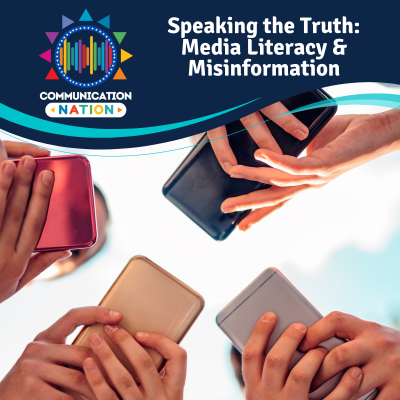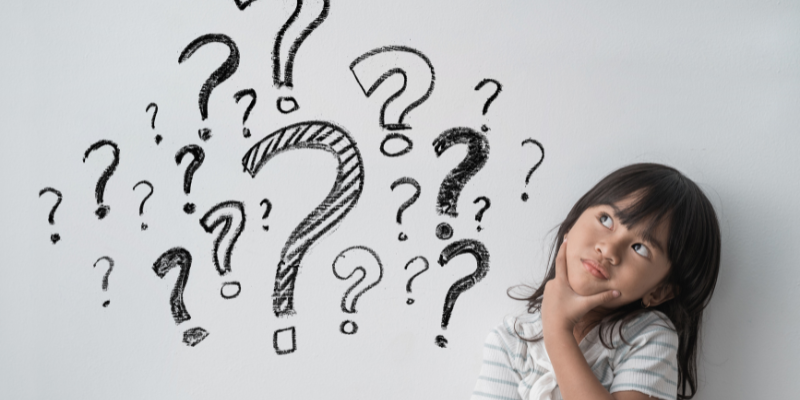Podcast: Play in new window
Subscribe: Apple Podcasts | RSS | More


Communication Nation Episode One: Speaking the Truth: Media Literacy & Misinformation is the first of a four part radio series exploring communication to better understand one another. We can only have effective communication when we can trust our sources. We learn about media literacy and misinformation from Eisha Buch at Common Sense Media.
Find the full set of educator tools and activities at the bottom of this page
This is the first episode in our four part radio series Communication Nation. This episode, Speaking the Truth – Media Literacy & Misinformation features the Kids Crew in conversation with Eisha Buch from Common Sense Media. We learn about how our critical thinking skills can help us identify media sources we can trust, and keep us aware when something doesn’t quite add up. Understanding what is fact and what is fiction takes an effort by the media consumer. We are all media consumers.
The word media refers to any television, social media, internet news sites, newspaper, book, magazine, podcast, movie, and other source of information we use to learn about the world around us, and to be entertained. Eisha begins by teaching us what the term media literacy means.


Media literacy means asking yourself who created this media, why did they create it, do they have a bias toward a specific point of view, is this the full story? As we explore media literacy, we learn about the concept of a media diet. Do you know how much media you are consuming, and which kinds? Track your media diet!
My Information Diet
Think about, write down, and share examples of media you interact with regularly including TV shows, movies, social media, advertisements, and magazines or newspapers. How does your information diet compare to others?

We also explore misinformation on this episode with Eisha Buch. Sometimes people might post something online that is false information in order to make a joke. Other times people post information without fully checking the sources, and using their media literacy skills.
But there is also another reason a story in a publication online, in social media, or elsewhere might be written with fake information. Sometimes someone, or groups might try hurt their competition by pushing disinformation. Disinformation is hurtful, and makes people believe things that are not true.
Know Your Media Sources
To avoid the spread of false information and determine if a source is reliable, it is important to practice critical thinking. Choose a source of media that you have seen recently, such as from a social media or streaming account that you follow or subscribe to. As you review and research the media source, use the graphic organizer and checklist to help you analyze it.

Learning how to critically consider media is an important skill that kids need to have mastered for a lifetime of learning. Common Sense Media has a Media Literacy Resource Center for students of all ages. Explore their tools, and find even more ideas in our Learning Guide found if you scroll down.
Everyone has a bias which is our view of the way things are, even if it’s not accurate. Favoritism for or against a thing, idea, person, or group, can lead to unfair treatment, and judgments that are not true. Our media has biases too. When you hear a story about whether something is good or bad, remember to ask who is telling the story, why are they telling it?
Analyze and Compare Perspectives
We know that everyone has their own point of view. That’s their perspective of a situation, and it reflects the bias they hold. When you hear a story, look for the perspective of the author and consider if there is a bias that impacts how the story is told. This activity helps kids explore perspective in a story.
This show was produced by our Executive Producer, Katie Stone, with help from Senior Producer Christina Stella, and producer Eli Henley. Chad Scheer provided live engineering at Outpost Performance Space. Lorraine Archibald wrote our learning guides. We also had support from 2024 Summer Intern Thaniel Lentz.
© 2024 The Children’s Hour Inc, All Rights Reserved
Playlist: Speaking The Truth
| title | artist | album |
|---|---|---|
| What's the Story? (feat. Rachel Trudel) | Tara Trudel | Fractured: Fairy Tales Remixed |
| Tell the Children the Truth | The Gaylads | The Gaylads: The Best Of... |
| Good News | Ian Carrick | Earthlings |
| The Great Tv Rebellion | The Missoula Coyote Choir & Friends | Ask the Planet |
| Onward | Podington Bear | Uplifting |
| Who Decided (feat. Silly Bus) | Kid Pan Alley | Best Friends |
| The Social Media Song | Shoeless | The Lost Year |
| Matter of Fact | Elliott Park | The Mouth |
| Truth (feat. Kelli Welli, Mo Phillips & SaulPaul) | Aaron Nigel Smith & Red Yarn | Smith & Yarn |
| Turn Off Your Phone | Ion Bodi and Kathleen Martin | Turn Off Your Phone |
| Are We Loose Yet | Blue Dot Sessions | Bodytonic |
| Adults Don't Always Know | Jumpin' jamie | Never Mind the Blocks: Here's Jumpin' Jamie |
| You Can't Learn It All On the Internet | Nick Bayard | Wishing Well |
| Screen Time | Animal Farm | We Are One |
| Jester | Podington Bear | Background |
| Take Time In Life | VooDoo Katz | VooDoo Katz |

Speaking The Truth
Learning Guide, Audio & Activities
Part one - Media Literacy
Speaking the Truth Part 1: Media Literacy
My Information Diet
Think about, write down, and share examples of media you interact with regularly including TV shows, movies, social media, advertisements, and magazines or newspapers. How does your information diet compare to others?
Part two - Misinformation
Speaking the Truth Part 2: Misinformation
Know Your Media Sources
To avoid the spread of false information and determine if a source is reliable, it is important to practice critical thinking. Choose a source of media that you have seen recently, such as from a social media or streaming account that you follow or subscribe to. As you review and research the media source, use the graphic organizer and checklist to help you analyze it.
Part Three - Bias
Speaking the Truth Part 3: Bias
Analyze and Compare Perspectives
We know that everyone has their own point of view. That’s their perspective of a situation, and it reflects the bias they hold. When you hear a story, look for the perspective of the author and consider if there is a bias that impacts how the story is told. This activity helps kids explore perspective in a story.
Thank you Sponsors
This program is made possible by funding from the National Endowment for the Humanities and the United We Stand Connecting Through Culture Initiative, and by the New Mexico Humanities Council. Any views, findings, conclusions, or recommendations expressed in this program do not necessarily represent those of the National Endowment for the Humanities or the New Mexico Humanities Council.













